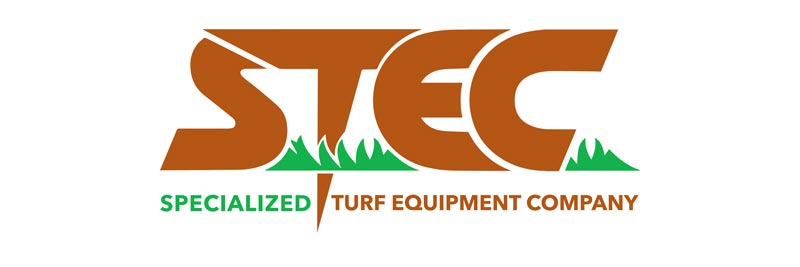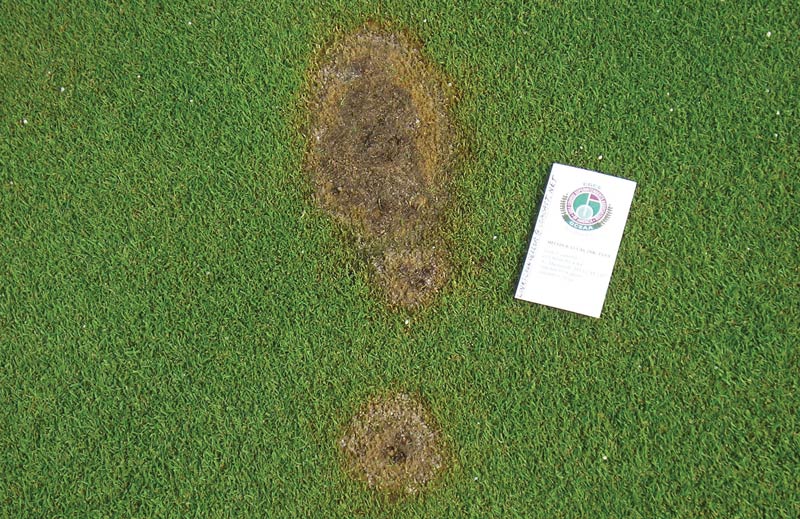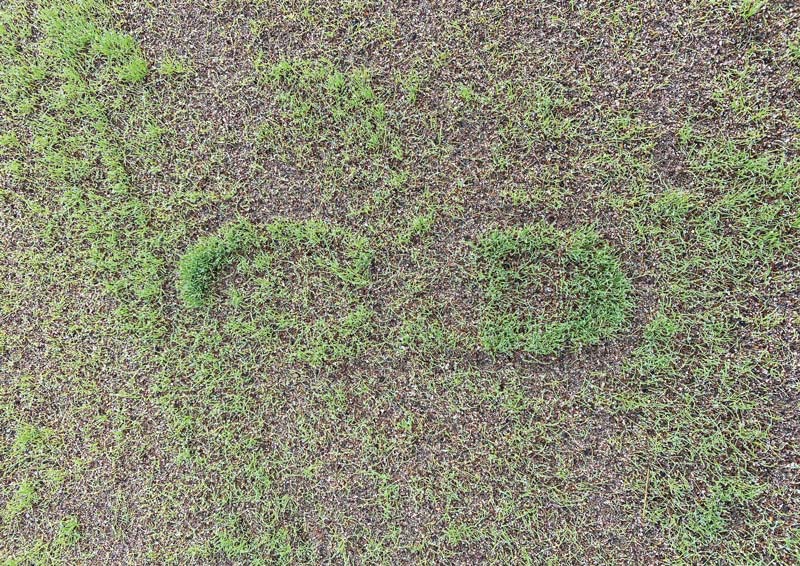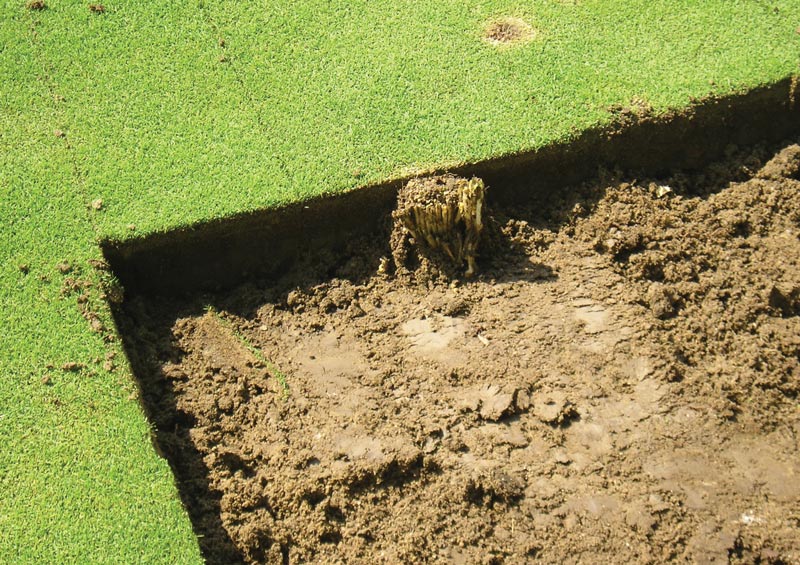GCM’s Photo Quiz is presented in partnership with STEC Equipment.

Problem A: Green footprints and lines

Location: Kanagawa Prefecture, Japan
Turfgrass area: Turfgrass nursery
Turfgrass variety: DC-1 bentgrass
Problem B: Brown, hard areas devoid of turf

Location: Belgrade, Serbia
Turfgrass area: Putting green
Turfgrass variety: Penncross bentgrass
Scroll down for answers.
Problem A: Green footprints and lines

This golf course is located on a U.S. military base on Japan’s Kanto Plain. It is in a transition zone climate with a strong rainy season, and the seasons tend to change quickly. The area sometimes has a mild, almost cold spring, with lots of rain until July. Then the temperature jumps from the mid-60s to the mid-90s — sometimes even as high as 100 degrees — within a few days, which is why rebuilding the 15,000-square-foot turf nursery to USGA recommendations and seeding bentgrass was a high priority.
Crew members rebuilt the area in the winter and spring, but because of the hot summer, the area wasn’t seeded until the beginning of September. They then leveled out the area and added a mix of sand and a soil amendment from Profile. They seeded two directions, then used a Sand Pro with the rakes up to work the seed into the ground with the knobs of the tires, then rolled using a walk mower.
The superintendent commented that “Wherever I walk, grass grows,” and you can easily see his footprints and the spreader tire tracks because of the good seed-to-soil contact.
Photo submitted by Albert Bancroft, the golf course superintendent at Camp Zama Golf Course in Kanagawa Prefecture, Japan, and a 20-year member of GCSAA.
Problem B: Brown, hard areas devoid of turf
Although the area on this putting green — brown, hard and devoid of turf — looks like it has been hit with disease, the true culprits are trees. The sycamore tree is a vigorous, fast-growing species with equally vigorous roots. Although some trees send down a deep, central taproot that serves as the primary anchor, sycamore roots only extend down about 6 feet and then spread to all sides of the tree, extending well beyond the drip line.

In this instance, some of these particular tree roots extended out 55 feet and found the water and nutrients in the greens profile to be the perfect place to live. The green surrounds had been trenched two years before the photo of the damage, and a root barrier had been installed. However, the roots had a mind of their own, growing under the barrier and producing nodes every 3 to 4 feet, sending up these shoots while trying to establish new trees. The areas were hand-excavated by removing 4-inch-thick sod, removing the root clusters, and then screening, backfilling and tamping the soil back into place before reinstalling the sod.
Photo submitted by Mel Lucas, CGCS Retired, an international turfgrass consultant and former superintendent. A 58-year member of GCSAA, Lucas served as association president in 1980.
Editor’s note: Have a photo for Photo Quiz? Email it to author John Mascaro.
John Mascaro is the president of Turf-Tec International.